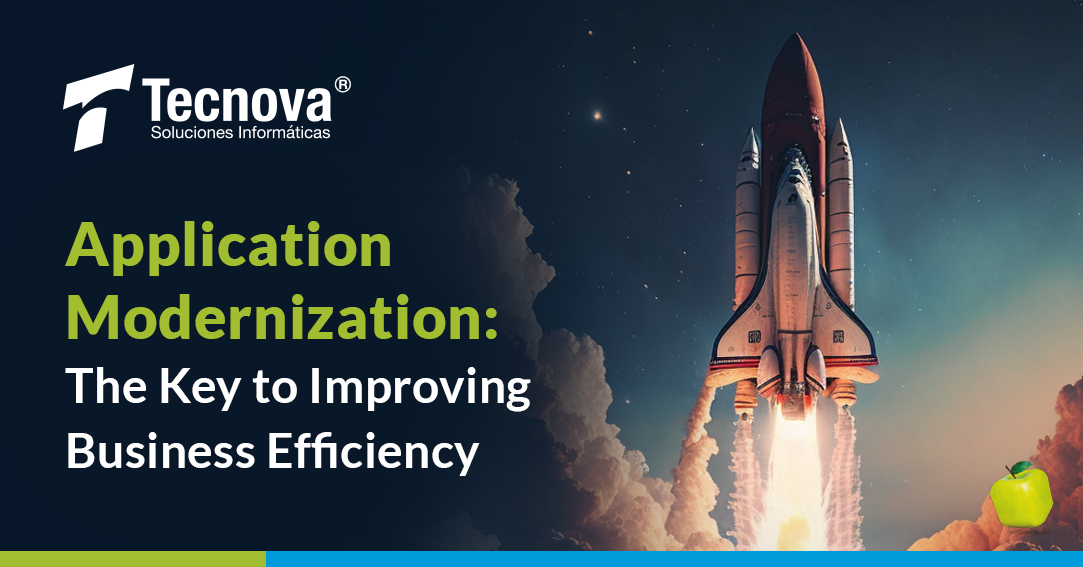Application Modernization: The Key to Improving Business Efficiency

Introduction Application modernization is essential in today’s business world as it allows organizations to keep up with the latest technologies and development practices. This process not only reduces time to market but also increases agility and the ability to adapt to changing market needs. In this article, we will explore the strategies and benefits of application modernization.
What is Application Modernization?
Application modernization is the process of updating and improving existing software applications to meet current and future business needs. This process may involve improving architecture, incorporating new technologies, enhancing usability and scalability, and optimizing performance. Modernization enables companies to stay competitive in the market and take advantage of the latest technological innovations.

One key to successful modernization is reducing time to market, which means bringing products or services to market quickly. By adopting agile approaches and creating agile cells within the organization, companies can accelerate the modernization process and respond quickly to market demands.
Wich are there Application Modernization Strategies?
There are various application modernization strategies that companies can adopt based on their specific needs and goals. Some of the most common strategies include:
- Rehosting: Migrating the application to a new infrastructure environment, such as moving from on-premises servers to the cloud. This allows companies to take advantage of cloud computing benefits, such as greater scalability and flexibility.
- Replatforming: Changing the application to a new platform, such as moving from an outdated operating system to a more modern one. This may involve the use of containers to facilitate application portability and deployment across different environments.
- Refactoring: Reviewing and modifying source code to improve its structure and efficiency without changing the core functionality. Agile approaches can be helpful in this process as they allow for incremental changes and rapid adaptation to changing business needs.
- Rearchitecting: Redesigning the application architecture to adopt new approaches and technologies, such as microservices. Microservices allow for breaking down an application into smaller, independent components that can be developed, deployed, and scaled individually.
- Rebuilding: Rewriting the application from scratch using the latest software development technologies and approaches. Apification is an example of this approach, which involves turning monolithic applications into API-based applications, facilitating integration and interoperability with other systems.
- Retirement: Removing outdated or redundant applications that are no longer needed or can be replaced with more modern solutions. This process allows companies to focus their resources on more relevant and efficient applications and technologies. Implementing agile cells in the modernization process can also be helpful in accelerating the process and enabling closer collaboration among the different teams involved in the project.
What are the Benefits of Application Modernization?
Application modernization offers numerous benefits for companies, including: • Improved performance and efficiency: Modernized applications are typically faster and more efficient, improving productivity and reducing operational costs.
- Greater scalability: Modernized applications are designed to grow and adapt to changing business needs, facilitating expansion into new markets and company growth.
- Risk reduction: Updated applications are generally more secure and reliable, reducing risks associated with obsolescence and security vulnerabilities.
- Integration of emerging technologies: Application modernization allows companies to adopt and take advantage of new technologies such as artificial intelligence, machine learning, the Internet of Things (IoT), and blockchain, among others.
- Facilitating digital transformation: Application modernization is a key component in a company’s digital transformation, allowing organizations to quickly adapt to changing market demands and stay competitive in the digital age.
Conclusion
Application modernization is an essential process for staying competitive in today’s market. By adopting effective modernization strategies and leveraging agile approaches, companies can improve the performance and efficiency of their applications, reduce risks, and take advantage of emerging technologies. Investing in application modernization is a strategic decisión that can have a significant impact on the long-term success and profitability of an organization.
In summary, application modernization is a crucial process that enables businesses to stay ahead of the competition in the rapidly evolving technological landscape. By adopting effective modernization strategies and leveraging agile methodologies, organizations can improve the efficiency and performance of their applications, reduce risks, and take advantage of emerging technologies. Investing in application modernization is a strategic decision that can help businesses maintain their competitiveness and achieve long-term success.
More information:








